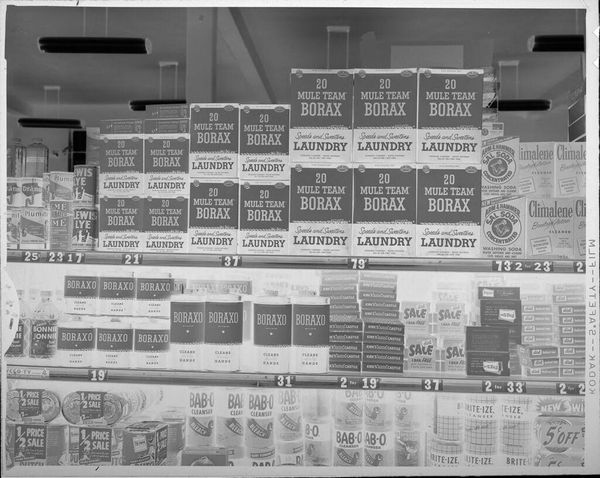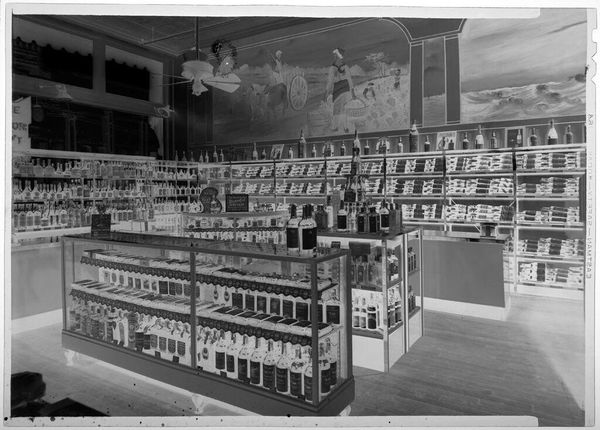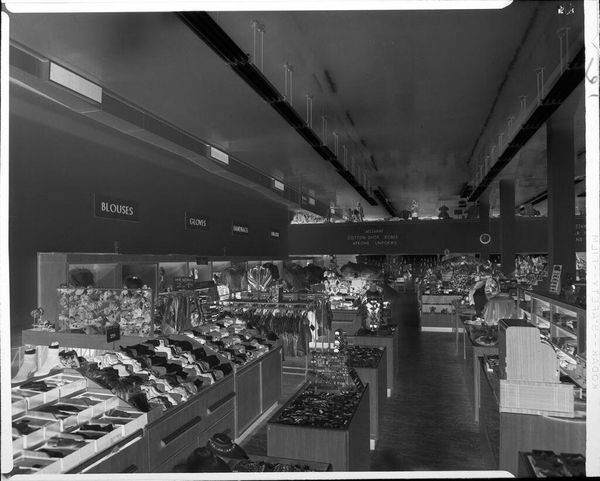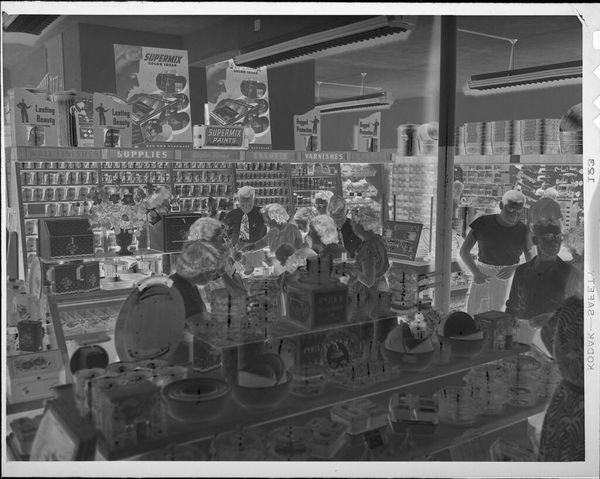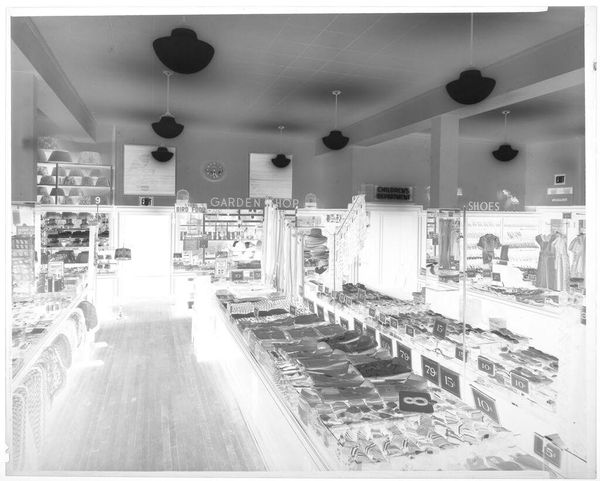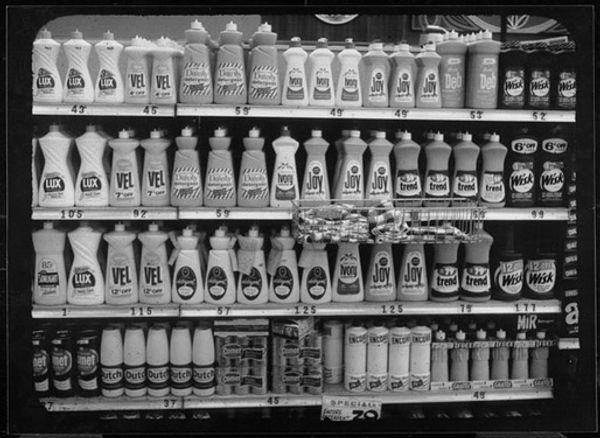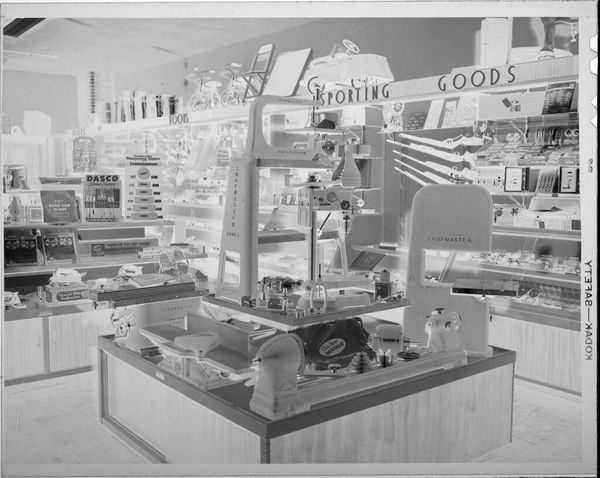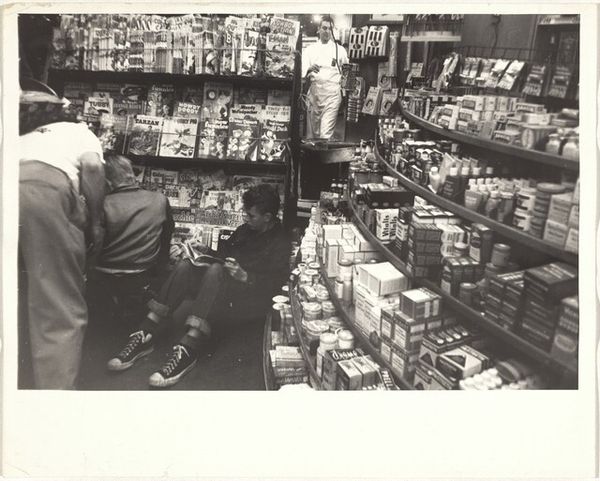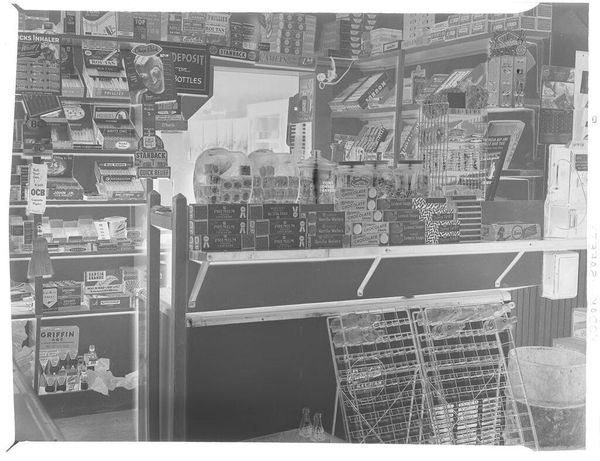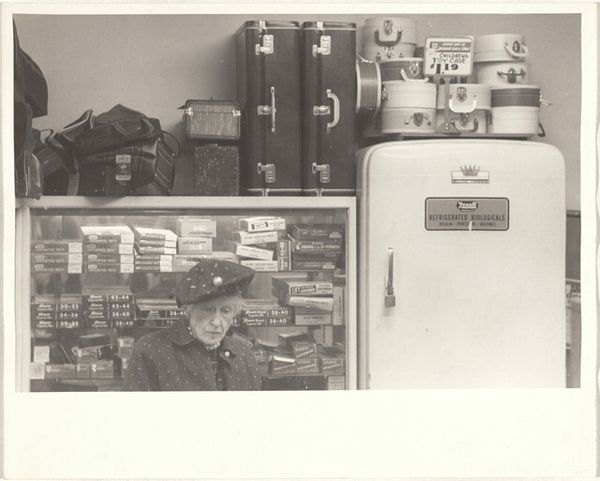
Dimensions: image: 15.2 × 15.2 cm (6 × 6 in.) sheet: 35.5 x 27.9 cm (14 x 11 in.)
Copyright: National Gallery of Art: CC0 1.0
Editor: So, this is Robert Adams' "Supermarket, Denver," possibly taken between 1973 and 1997. It's a black and white photograph, and it's… well, it’s kind of visually overwhelming, all this stuff crammed into one frame. What jumps out at you when you look at it? Curator: Immediately, I see a commentary on consumer culture. Adams photographed this during a period of significant urban sprawl and suburban development in America. How does this image play into our understanding of the role that supermarkets play in shaping communities and economies? Editor: I guess I hadn’t really considered it that deeply. It just looked like a mundane photograph of stuff for sale. Curator: Exactly! That's where the genius lies. The banality is the point. Consider how supermarkets became central hubs, displacing town squares and local businesses. And note the greyscale; without color, the objects appear even more mass-produced and generic, furthering the feeling of homogenization that came with consumerism. How do you feel the items themselves – things like makeup, seasonings – contribute to this idea? Editor: That's true. The makeup with the faces on the packaging… It feels like a critique of advertising, too, the way it tries to sell us an ideal. Curator: Precisely. And think about the shelves – so regimented and full. Does this arrangement appear inviting to you, or does it make you think about mass production and availability over individual needs or desires? Editor: I see your point. It feels more alienating now that you mention it. More about the *idea* of the supermarket than the actual items being sold. Curator: Exactly. What appears ordinary holds significant implications for our society. This challenges us to consider what it is we *really* consume. Editor: That's a really powerful interpretation. I’ll definitely see supermarkets differently from now on! Curator: It is easy to overlook the complex ways we interact with commerce every day. Looking at everyday settings and teasing out cultural cues like these offers fresh opportunities to better understand modern culture.
Comments
No comments
Be the first to comment and join the conversation on the ultimate creative platform.

